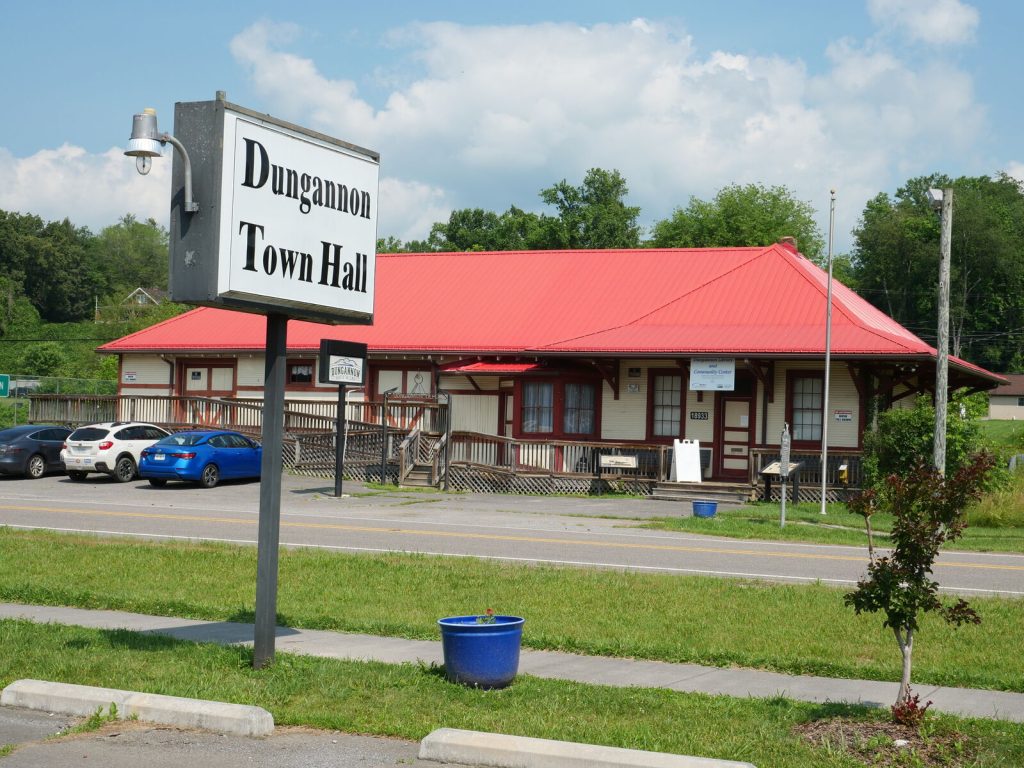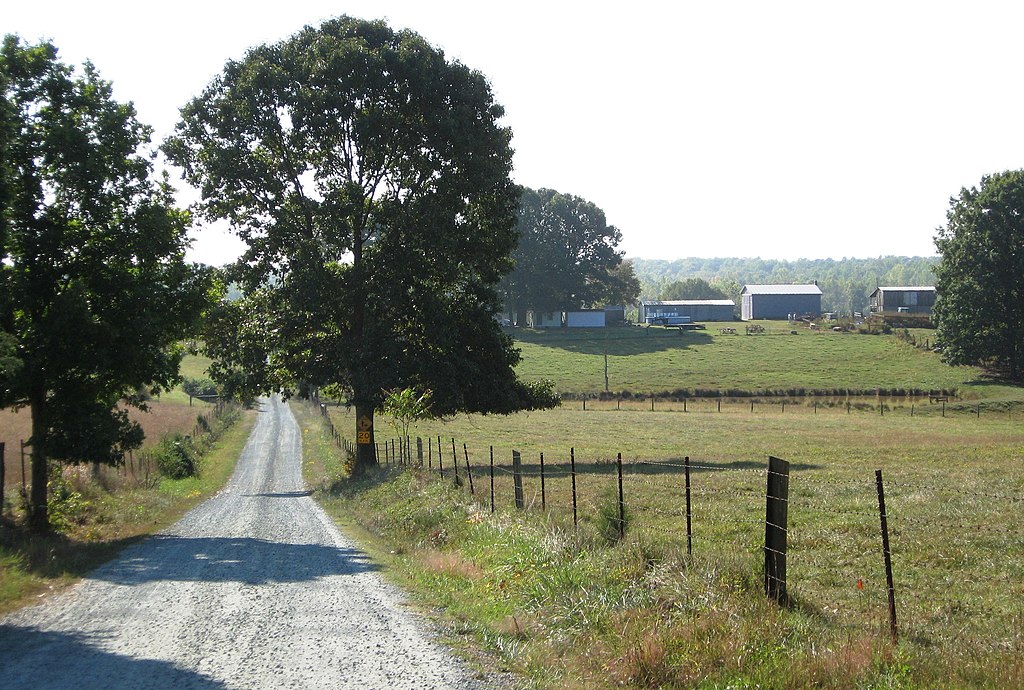Museum of Appalachia – The Ultimate Field Trip
John Rice Irwin tarried among his exhibits for an hour. Maybe more.
And that was still not enough to show it off. It was hardly more than a breeze-through of the farm tools, musical instruments, antique furniture and odd relics of yesteryear at the Museum of Appalachia.
Irwin smiled and said, “You could spend a whole day here.”
At least.
The extensive exhibits of the Museum of Appalachia have become a landmark of Norris, Tenn., where Appalachian music pioneers like The Carter Family and Bill Monroe are still stars. And, outdoors, log cabins form a cohesive village that typifies what much of the Appalachians once looked like.
And still do – on these grounds, at least.
It all began in the early 1960s as Irwin crisscrossed the back roads of Virginia, Kentucky and Tennessee, searching for treasures facing extinction.
He was a young man then – an educator – and he made it his life’s work to collect whatever provided a window to the past.
One item he found was a corncrib that belonged to the Cox family but had faced destruction with the construction of I-75.
Another was a blacksmith shop that once stood in a remote place called Rebel Hollow in Hancock County, Tenn.
Irwin went down to Luttrell, a Tennessee town now famously known as the hometown of country music superstar Kenny Chesney. There, Irwin discovered a log home where Nathaniel Peters had lived near Luttrell in about 1840.
Today, the Peters house stands near the center of a circle of long-ago life called “The Old Homestead,” a living history display at the Museum of Appalachia that also encompasses a loom house, a bark grinder, underground dairy, sawmill and slave cabin.
Talk about the ultimate field trip destination. The outdoor displays alone are enough to call attention to this place.
Irwin and a daughter, Elaine Meyer, have assembled about 20 structures on site and also raise farm animals like sheep in a center pasture.
Visitors routinely show up by the bus load.
They learn about Mark Twain – the literary voice of Tom Sawyer and Huckleberry Finn – by taking a stop at the “Mark Twain Family Cabin,” moved to this site from Possum Creek, Tenn.
Here, likely, Twain was conceived, since it was the home of Twain’s parents and some of his siblings, just a few months before the family left Tennessee in 1835.
Just do the math: The famous writer was born about five months after the move.
Hollywood buffs – and history buffs, too – would enjoy stepping inside the “Dan’l Boone Cabin,” a one-room dirt-floor structure that was used by 20th Century Fox as the frontier home of Daniel Boone in the CBS-TV series called “Young Dan’l Boone.”
Yet, there is also a historic tie, in that this cabin once stood in Anderson County, Tenn., in the early 1800s.
You’ll also find the “Big Tater Valley Schoolhouse,” moved here from nearby Big Tater Valley, which lies along Bull Run Creek between Tennessee’s Union and Grainger counties.
It goes on and on.
And, to explain how it all got here, Irwin had to write book.
“The Museum of Appalachia Story,” published in 1987, unfolds the great crusade of this white-haired gentleman, whose work likely inspired similar attractions such as the Historic Crab Orchard Museum and Pioneer Park near Tazewell, Va., and the Homeplace Mountain Farm and Museum on the outskirts of Weber City, Va.
Irwin spent a quarter-century as a teacher, principal and college professor. He was also a school superintendent. Along the way, he dabbled in the business world.
He wrote books. And people have written about him.
An article in “Reader’s Digest,” dubbed “A Man and His Museum,” sparked a spike in attendance records at the Museum of Appalachia in 1986. Then came an appearance on NBC’s “Today Show” and an article in “Parade.”
Along the way, daughter Elaine inspired her father to get it all down on paper – how this massive collection of attractive Appalachian artifacts came to be assembled.
“It all began, I suppose,” Irwin writes, “with my boyhood fascination with the older folks in the community.”
Irwin roamed the mountains where Tennessee meets both Virginia and Kentucky. He collected not only stories but all kinds of hand-crafted items, eventually filling his garage to the hilt.
Before long, this man had the makings of a museum, soon after he restored and rebuilt an old cabin.
“It became a sort of obsession,” Irwin writes. “I added other cabins, bought more land, and people started coming by for visits.”
The Irwin family welcomed both friends and strangers but soon found people showing up in their backyard when they were not at home.
Finally, Irwin started charging a nominal fee and installed a service-station-style hose to ring a bell as a car came across the family’s driveway.
“That was in 1969, and the entire first year’s visitors numbered about 600,” Irwin writes. “A few years later the attendance would be more than those 600 visitors within a period of a few hours.”
It’s not all limitede to what’s outside.
While the 65-acre Museum of Appalachia boasts itself as “A Living Mountain Village,” it features many displays of country music performers, including photos, records and handwritten descriptions of their importance to Appalachian culture.
There’s also an extensive Indian artifact collection plus dozens of other exhibits, including the story of Harrison Mayes, a coal miner who erected huge crosses across the country.
Standing inside the handsome building called The Appalachian Hall of Fame, a soft-spoken Irwin gingerly pointed out various exhibits, including one that profiled his friends, The Carter Family.
Irwin once had a special fondness for visiting the home place of these pioneer musicians, near Hiltons, Va., in the shadow of Clinch Mountain. On the walls today are pictures taken by Irwin of the late Janette Carter and Joe Carter, children of original Carter Family members A.P. and Sara Carter.
Going back outside, Irwin smiled.
The white-haired scholar soaked up the sunshine brightening the green hills sheltering his life’s work as a group of young ladies posed for pictures near a row of fences.
The girls, in their designer dresses, looked like they belonged to the 21st Century. But the scenery behind them sure didn’t.
And that’s all what Irwin had in mind – “not to develop a cold, formal, lifeless museum,” he said. “It was my goal to make the Bunch Cabin, the Arnwine Cabin and all the other dwellings appear as though the family had just strolled down to the spring to fetch the daily supply of water.”
————————————–
The Museum of Appalachia’s special events this year include:
July 4 – Celebration and Anvil Shoot
Oct. 9-12 – 29th Annual Tennessee Fall Homecoming
Dec. 7-26 – Christmas in Old Appalachia
FOR MORE
WHAT: Museum of Appalachia
WHERE: Norris, Tenn., located 16 miles north of Knoxville on I-75, Exit 122
INFO: (865) 494-7680
WEB: www.museumofappalachia.com
JOE TENNIS is the author of BEACH TO BLUEGRASS: Places to Brake on Virginia’s Longest Road (The Overmountain Press), which profiles legends and landmarks along US-58, including Cumberland Gap and The Carter Family.
For more information on the region’s many other outstanding museums, see p. 20 and our web site: www.AppalachianVoices.org
Related Articles
Latest News
More Stories

Leave a comment
Your email address will not be published. Required fields are marked *





Leave a Comment